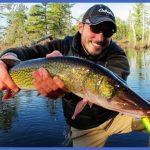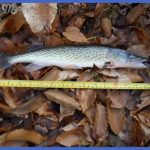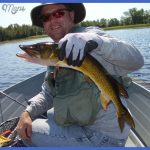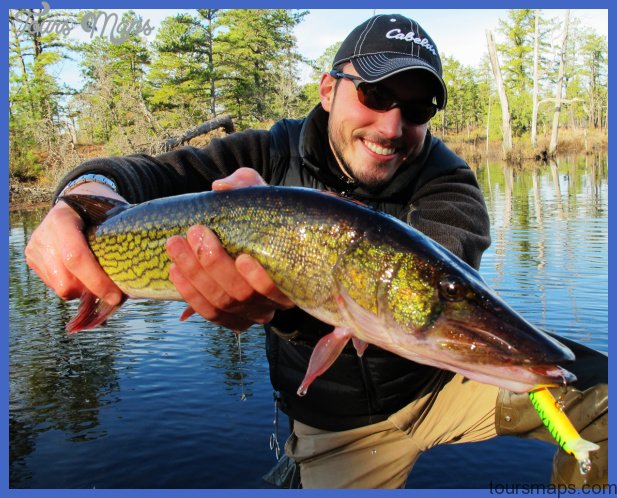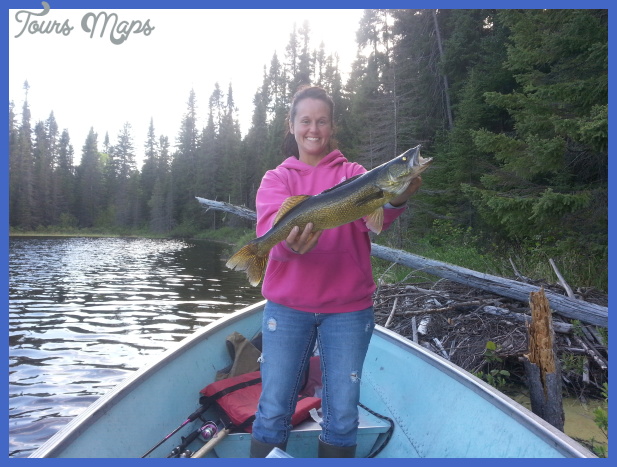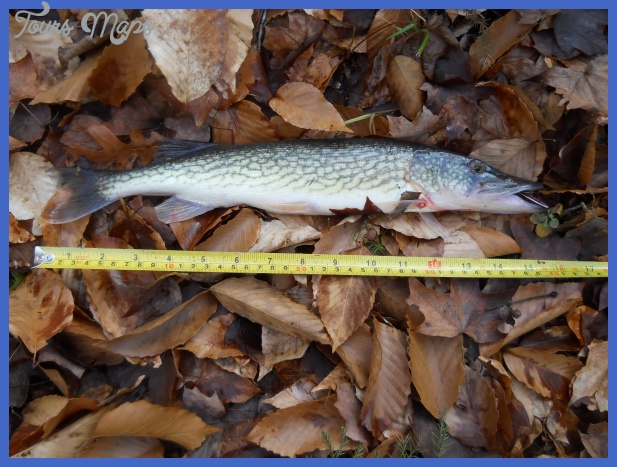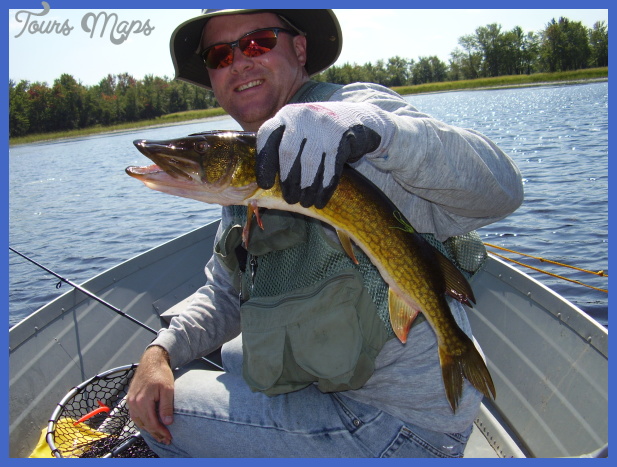Pickerel, Esox niger, are widespread in Maine’s warmwater ponds, lakes, and streams. These members of the pike family are splashy fighters and are easily taken on artificial lures, bait, and flies. Despite the fact that pickerel can provide almost year-round sport, Maine anglers do not spend much time fishing for them during the open water season, and only a small number bother fishing for them through the ice.
Because pickerel are so numerous in Maine waters, bag limits are extremely liberal. If you like fast-paced fishing with constant action, you will enjoy pickerel fishing. Pickerel are also great fun for children and are recommended as a good first fish for beginners.
Pickerel feed mainly on other fish, but are not reluctant to pick off a swimming frog or even a careless dragonfly. They are denizens of the weed beds, where they will sit motionless for hours, waiting for a bait fish to swim past. Pickerel are seldom taken in deep water.
Most Maine anglers head for the trout streams or lakes in early spring, the pre-spawn period for pickerel, ignoring the fact that the biggest pickerel can be taken when the water is cool. During the hot spells of Maine’s brief summer, pickerel become somewhat lethargic. However, you can still catch pickerel then; even if they are not particularly hungry, they are so savage that they will strike anything that comes near their resting place. Even so, the best time to fish for them in hot weather is early and late in the day.
The largest pickerel taken in Maine weighed 11.61 pounds. Specimens weighing 4 and 5 pounds are taken each year.
Techniques
Spin fishing – Weed beds, sunken logs, and any other shallow-water structure are prime areas to cast for pickerel. Weedy sections of slow-moving rivers are also prime spots.
Since most pickerel you will catch will weigh under 3 pounds, light spinning tackle is ideal. Use a short wire leader or a shock tippet of 15-pound test monofilament line, since pickerel have sharp, dagger-like teeth, capable of severing light lines.
It would be difficult to name an artificial lure that pickerel would not strike. Favorites include Daredevles, Rapalas, and red plastic worms. If you like fishing from a boat, a canoe is your best bet. With it, you can glide noiselessly close to prime pickerel cover. If fishing from shore, concentrate on open areas near weeds. If you see a swirl just behind your lure, stop reeling for a moment and then continue. This will often elicit an explosive strike. Pickerel are not hook-shy, so if you hook and lose one, you can probably coax it into biting again.
If you find a likely looking spot that you are certain must hold a few pickerel, give it a thorough working over. Sometimes pickerel will ignore a lure the first few times they see it, only to smash it after repeated casts.
Pickerel are easily taken on topwater lures. Lightweight poppers are best, with green a favorite color. Cast near weed beds and let the popper rest before imparting action. Pickerel will often clear the water as they lunge after a surface lure.
Be extremely careful when handling pickerel, since their teeth can inflict a nasty bite. Never put your hand in a pickerel’s mouth. Use forceps instead.
Fly casting – Pickerel are great fun on a fly rod. They strike streamers and bucktails and respond well to surface offerings. No special pattern is needed, but yellow, white, red, and orange are all good colors. If pickerel fail to respond to a slowly fished bucktail, try reeling your line in as fast as possible. This technique sometimes brings savage strikes.
Long leaders are not needed. Use a level or tapered leader of at least 8-pound test. An 8-or 9-foot fly rod of at least 6-weight is suggested. Although pickerel can make powerful runs, they seldom go for more than 10 feet, so fly reels need not be elaborate. You should still have backing behind your fly line, in case you hook a trophy. You will have no need of a sinking fly line, since pickerel are rarely taken in deep water.
Bait fishing – Most bait fishers use live minnows. Large minnows are preferred, up to 4 and 5 inches long. Pickerel are not reluctant to attack a fish only slightly smaller than themselves. The author was once reeling in a pickerel of about 15 inches, when the fish suddenly gained weight. A 6-pound pickerel had grabbed the hooked fish by the tail and wouldn’t let go.
Minnows are best fished in conjunction with a small bobber, since without it, the bait would soon become entangled in the weeds. Be careful about striking too soon, as pickerel seldom swallow a bait fish without killing it first.
Lacking live bait, some anglers keep frozen strips of belly meat from white suckers. These are cut into thin, 6-inch, lancelot-shaped pieces, leaving the skin intact. The hook is pushed all the way through one end of the sucker strip.
Do not use any additional weight. A 9- or 10-foot fly rod is perfect for this method. While standing on shore or sitting in a canoe, extend the tip of the fly rod over the edge of a weedbed. Allow the sucker strip to sink and gently raise it, all the while manipulating the rod to cover all the territory possible without taking up a new position. In years past, this was done with a cane pole or telescoping metal rod.
Suckers live in most Maine lakes, and if you want to catch some for future use, look for them to run up small brooks and streams sometime in April, or as soon as blackflies begin to hatch. If you cannot find any suckers, you can get good results with old-fashioned pork rind strips. Use the largest strips you can find.
Ice fishing – Pickerel are eagerly sought by early-season ice fishers, since many pickerel ponds can be legally fished before the ice fishing season on coldwater gamefish begins. Fish the same places you would hit during open water season: the mouths of coves, along weedbeds. Use tip-ups, baited with live minnows.
Pickerel respond well to metal jigs. Lower a jig down to the bottom, and raise it only a few inches. Hold the jig motionless as long as possible, then gently give it a twitch. An open-face spinning reel and a short jigging rod are the perfect combination.
Best bets for Maine pickerel: Goose River, Site 29; Crawford Lake, Site 55; and Bog Lake, Site 49. Additionally, most shallow ponds in southern, central, and Downeast Maine offer good pickerel fishing.
Fishing: Pickerel Photo Gallery
Maybe You Like Them Too
- The Best Cities To Visit in The World
- World’s 10 Best Places To Visit
- Coolest Countries in the World to Visit
- Travel to Santorini, Greece
- Map of Barbados – Holiday in Barbados

